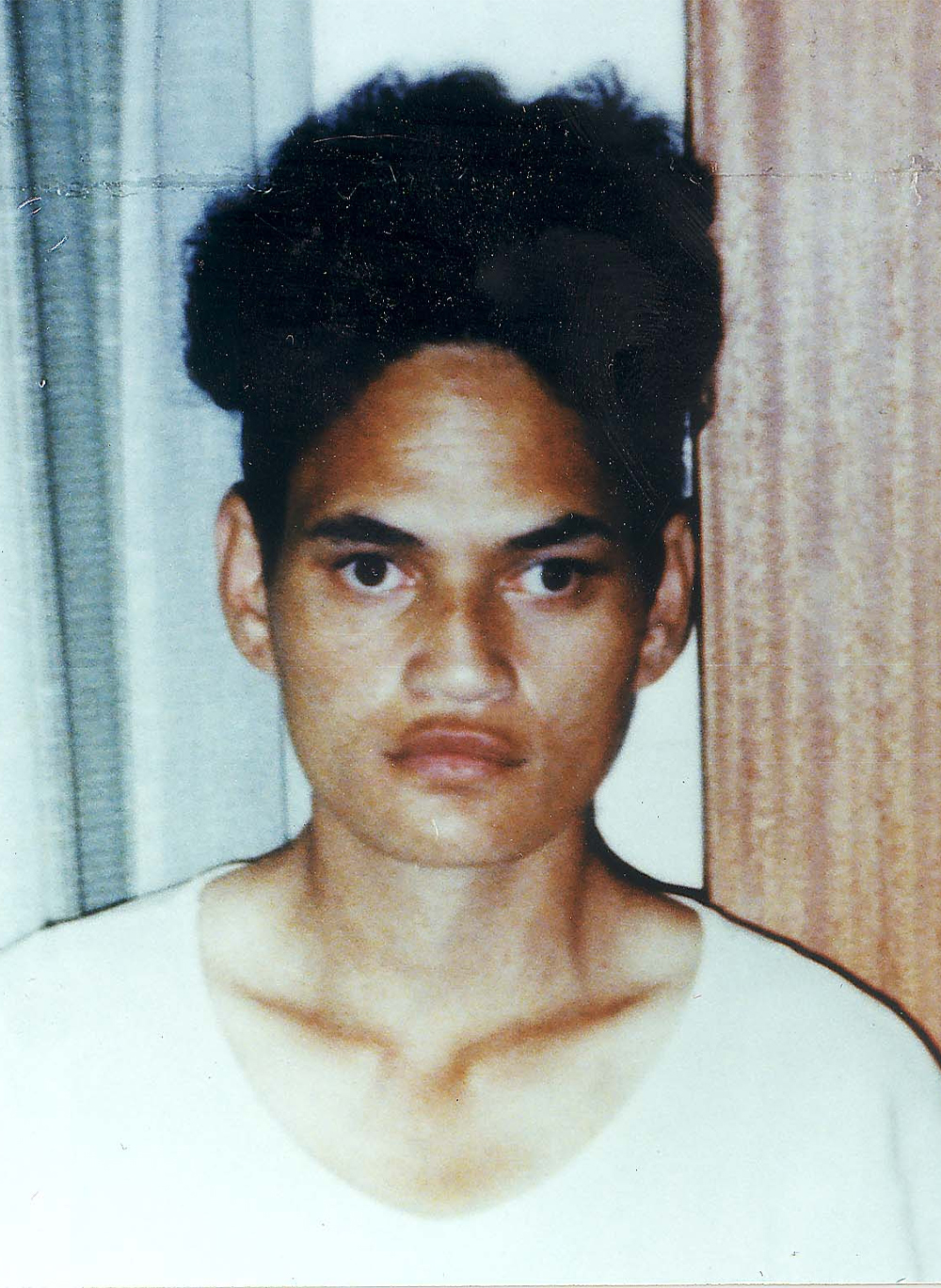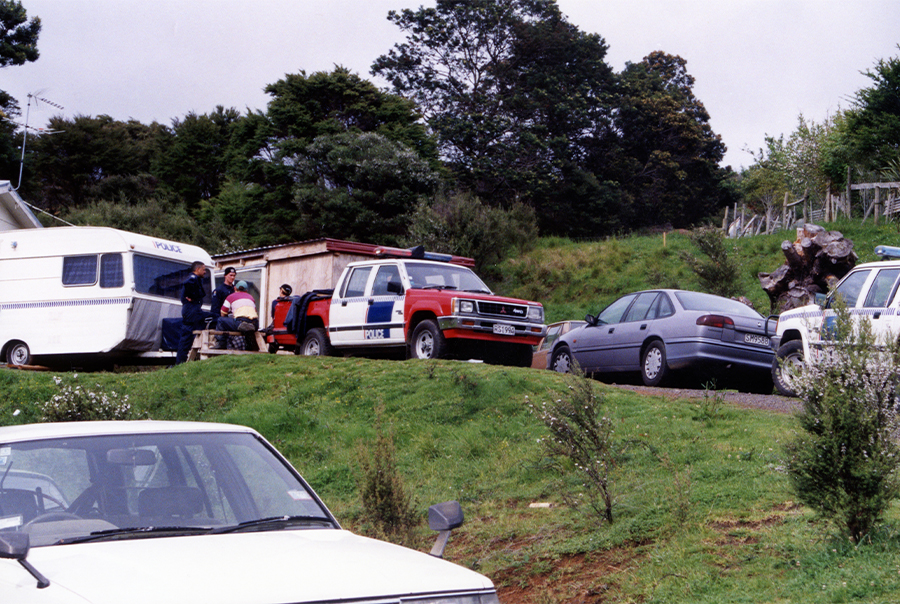

Operation Gypsy
February 13, 2025
Two young women are missing, allegedly murdered in violent circumstances. Who are Gypsy, and Alexa Cullen? What really happened to them? Or are they the same woman? Thirty years later, a tragic story remains a dark mystery.
By Scott Bainbridge
In 1998, the chance admission of a man who gave police information about the disappearance of a girl in violent circumstances three years earlier initiated a nationwide and public investigation. The tip seemed solid, but today, detectives are still no wiser in finding out what happened to Gypsy, or who she actually was.
Throughout 1997, police began hearing rumours about the murder of a teenage girl several years earlier. Little was known except that she was picked up or abducted by two men from a suburban Auckland street and brought to the Waikato where the men allegedly brutally raped and murdered her, before dumping her body in a secluded spot.
With no evidence to substantiate the rumours, police were unable to commence any kind of investigation. As the months passed, they continued to probe informants and contacts involved in the criminal underworld but had little success.
In April 1998, Hamilton detectives arrested a man on minor drug charges. Even though he had an average criminal record, he seemed more nervous than one would expect for his current predicament. Towards the end of his interview, he admitted knowing something about an unsolved murder which happened three years earlier.
The incident allegedly occurred in mid-1995. The victim was a vulnerable wāhine Māori in her late teens or early 20s. The two men responsible whom he named, referred to her as Gypsy. They didn’t say whether Gypsy was her actual name or nickname.
There had been early inconsistencies as to how the men happened to meet Gypsy. One account was they picked her up late one night from an Auckland city street. Another was they picked her up from a party or pub. This latest version had them picking her up while she was hitchhiking in Auckland City.
Whichever version is correct, there seems to be consensus on the next stage. The trio left Auckland and headed to Waikato. Arriving at a secluded spot between Mercer and Huntly, the men over-powered Gypsy, taking turns raping her, and she dies because of injuries sustained in the attack or was murdered shortly thereafter. Her body is buried somewhere north of Huntly.
The arrested man could not provide details of the murder but was able to name names. Acting on this new information, 35 detectives began interviewing around 30 people in Waikato, Auckland and Northland. These people were known to be associates of the two men. The two suspects were brought in and interviewed at length, but they offered no information to assist police in their enquiry. Moreover, the two men denied meeting anybody by the name of Gypsy, or having any involvement in any rape and murder.
It was alleged Gypsy was raped in the back seat of the car that picked her up that night. While the two suspects were unable to assist the inquiry, police turned their attention to the vehicles known to be owned by the men in 1995.
By sheer coincidence, police had seized a 1977 red-orange Holden Torana owned by one of the men a month earlier. The car was suspected to have a stolen engine fitted. It was still in police storage awaiting confirmation the engine had been stolen.

On April 10, 1998, the Torana underwent detailed forensic testing. Even though almost three years had passed, police hoped there would still be traces of semen, blood, or hair evident. However, forensic experts found the original rear seats of the Torana had been recently removed and replaced.
It was learned that sometime over the previous two years the rear seats of the Torana had been sold and refitted in a second vehicle. The second car was traced to a Waikato couple who had innocently purchased the car several months earlier, and had no connection with the inquiry whatsoever. Police seized this car as well.
Thorough forensic examinations were carried out on both vehicles on 15 April, but yielded no results.
By now, Operation Gypsy was one week old. Following completion of initial interviews, the enquiry team was scaled down to 10 detectives dedicated to solving the mystery, but they had one outstanding issue: they still did not know the identity of the victim.
In the Auckland region, police at every station meticulously reviewed all missing person reports over the previous three years to narrow down a list of possible victims. The number of missing person files in 1995 in Auckland alone numbered more than 3000. It was a long, involved process, which took several months to complete, yet there was no guarantee Gypsy was even residing in the Auckland region.
Youth workers and people in other social services were asked to check their files for any girls or young women who were known by the name or nickname of Gypsy and had not been seen for some time. Any identified with that nickname or a similar variance were located and eliminated from the inquiry.
Although the two suspects continued to deny any involvement in the alleged crime, Hamilton police continued to interview known associates. Several people stated the pair regularly boasted about their part in the rape and murder of Gypsy. Friends never seriously considered their ‘confessions’ genuine, as they were usually made under the influence of alcohol or drugs. As there was no evidence to support these claims, police were unable to make an arrest.

On July 7, 1998, police announced they had received further information. In concluding the interviews of known associates, police learned of a likely burial site. The two suspects had respectively admitted to burying Gypsy in or near a rubbish tip in Mercer or Meremere. Both villages are situated about 60km south of Auckland in the northern Waikato. The rubbish tip for the area is vast and had three years’ worth of rubbish dumped. Since none of the statements could pinpoint an approximate burial area for searchers, ground searches in the tip were not conducted.
Information continued to trickle in over the months, but there was effectively nothing solid enough to progress the enquiry.
Of Gypsy, all police knew was that she was a Māori woman aged in her late teens or early 20s. Even though there was no evidence suggesting a murder had been committed, police were convinced with the amount of information received that there had to be some degree of truth to the rumour.
Despite thorough enquiries with several agencies in Auckland and Waikato, police could not confirm the identity of Gypsy. They were now certain Gypsy was not her real name, and suspicious it might not have even been her true nickname. Gypsy could have been the name given to her by the men at the time. As the rumour grew and the story spread, the name stuck. There was one possibility.
Alexa Cullen matched part of the description of Gypsy but not all of it. There were circumstantial similarities in that Alexa frequently hitch-hiked between Coromandel and Auckland. Alexa was last seen wandering up a bush track in Manaia near Coromandel, on June 16, 1995 – around the same time Gypsy was allegedly abducted.
Alexa was aged 26 when she disappeared. She was born partially deaf and had a speech impediment which made it difficult to communicate with people. She lived with her grandmother until she died when Alexa was aged three. She grew up between foster families until her teens. She then moved to the tiny settlement of Manaia where many of her extended whanau lived, but her life was unsettled. She flitted from house to house and often left the settlement without warning. In the year leading up to her disappearance she lived in the care of family members who strictly controlled her benefit payments and were alleged to be mistreating her. She could not express how bad things were, but those family close to her suspected. Behind closed doors, she was treated as a virtual slave.
Suspecting she was being swindled out of her benefit money, Alexa turned up at the Thames branch of Work and Income at the beginning of June 1995, to query how she could change her bank account without having to inform anyone else. Soon after, she was seen arguing with a man outside Thames Postbank. Police were contacted as the man was seen to handle her forcibly. Alexa was frustrated because she could not express herself to the police and she became more agitated and upset. The man downplayed the argument and made up a story. Police let them go on their way.
On June 5, 1995, Alexa left home and hitch-hiked to Waihi. After several days, she hitch-hiked to Raglan, and then on to Piopio. A well-meaning social worker drove her back to Manaia on the afternoon of Thursday, June 15. By the following afternoon, she was gone again.
The family figured she would wander back home in a week or two, but when she failed to return after a month, they contacted police. An investigation was launched but nobody told police about the abuse she received behind closed doors so no suspicious circumstances were considered. Several people claimed they had last seen Alexa walking along a track near her home, so she could have met with an accident. A search was undertaken in the dense bush around Manaia, but she was not found. Checks were made with all people she visited outside the settlement but nobody had seen her. As a last resort, an appeal on television’s Crimewatch show was aired, but yielded no information. From then, the case stalled.
Three years later, when detectives were winding down their inquiries on Operation Gypsy, police received information that Alexa had been murdered and her body buried at a certain spot in Manaia. It was concerning enough for the police to act.
Detectives were not certain whether Gypsy and Alexa were the same, but they decided the publicity surrounding Operation Gypsy was an ideal opportunity to renew publicity about Alexa Cullen in the hope someone might come forward. The day after Labour Weekend, Alexa’s sister, Emaline, contacted police with some startling new information. During the long weekend there had been a large family gathering at Manaia Marae and noticed angry whispering and finger pointing among some of the people. New rumours surfaced that Alexa had died after being beaten by three people in a house in Manaia on or around June 16, 1995. Not intending to kill her, the offenders panicked and buried her body nearby.
There was another rumour which may have been the motive if it was true. It was heard that Alexa was pregnant.
Alexa was not known to have a boyfriend and most males she associated with were related. Whatever the circumstances were around her pregnancy, family members close to her believed being a mum was all she would have wanted. It was rumoured the father was one of the three men who likely killed her.
On November 3, 1998, a large team of 40 detectives, scientists and search and rescue teams converged on an address on Marae Road in Manaia and began searching the house and surrounding property. The house had been Alexa’s last home and it was here where she had allegedly been attacked.
Searchers scoured the steep hills, gullies and heavily bushed areas around the rear of the property. Radar detection equipment was utilised to locate disturbances in the earth where a body could have been buried. Such a spot was identified, but unearthed nothing suspicious. During their interviews with residents, the rumour of Alexa being murdered by three people was consistent. It was also learned the offenders panicked after realising their secret gained traction and further ignored her dignity. They exhumed her body in the days after Labour Weekend and buried her remains in an isolated spot deep in the bush surrounding Manaia. To date her body has not been found and the three people allegedly responsible remain free but ostracised by many in the settlement.
The cases of Gypsy and Alexa Cullen remain unsolved.
There are several similarities in both cases. Gypsy was said to be Māori, aged in her late teens or early 20s. Alexa was Māori and aged 26 when she disappeared, but could easily have been mistaken for being much younger in appearance and personality. Both were very vulnerable.
Both women hitch-hiked and disappeared in June 1995. Gypsy was taken from an Auckland street. Alexa had acquaintances she often visited in South Auckland, but it is accepted she vanished from Manaia and was allegedly murdered by three people known to her. The two men connected to the Torana and interviewed over Gypsy had no ties to Manaia or Coromandel.
Gypsy was supposedly buried within a rubbish tip in Meremere or Mercer. Alexa is believed to be buried somewhere in Manaia.
A reasonable physical description of Gypsy was provided, but no mention made of her being deaf. Alexa was profoundly deaf and had considerable difficulty in communicating. This should have been a factor in Gypsy’s description, yet it wasn’t.
Lastly, while her family admits Alexa had a nickname, it was Lexie or Lexia. She had never been called or referred to as Gypsy.
While Alexa still occasionally receives publicity in cold case articles and television shows, there has been nothing further on Gypsy. As the years pass with no new information, the tragic story of Gypsy has been consigned to myth.
Whether or not Gypsy and Alexa are the same person might never be known. Sadly, what remains probable is that the two women lived tragic lives and died violently.
In 2004, police established a missing persons unit and, over the next few years, whittled the number of historic missing person cases from 8000 to around 280. Many of the cases involved people being reported missing by family who failed to report when they turned up after a few days, or police had failed to properly close a file. Gypsy was once again checked against those females who disappeared around 1995, and while there were several on either side of that year, none matched her description or circumstances.
Last year, I contacted Hamilton CIB police to find out the status of Operation Gypsy and was told that while the investigation has been inactive since 1998, the file will remain open in the hope something does come in, some day.
